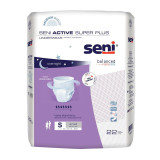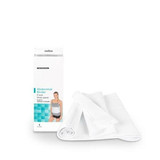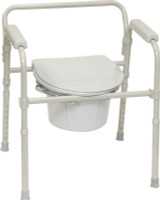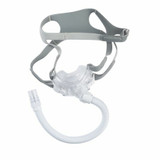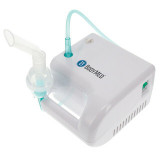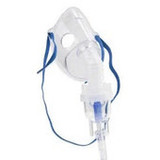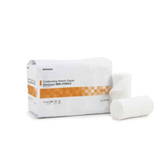
The Caregiver Guide - Fighting Type 2 Diabetes
Diabetes is a growing global health concern, affecting hundreds of millions worldwide. In the United States alone, it is estimated that over 37 million individuals have diabetes, with approximately 90-95% of them having type 2 diabetes, according to an April 2023 report published by the Centers for Disease Control and Prevention (CDC).
Type 2 diabetes manifests when the pancreas produces insufficient insulin or when the body becomes insulin-resistant. This defect causes the blood sugar level to rise too high, which, if left untreated, has serious long-term health implications. The most common consequences are:
· A significantly increased risk of developing heart disease or a stroke
· Nerve damage, which can lead to peripheral myopathy
· Diabetic Retinopathy, which is when the retina becomes damaged leading to deterioration of vision or blindness
· Blockage of small blood vessels in the kidneys which impairs kidney function and, in severe cases, total kidney failure.
The leading causes of Type 2 Diabetes are
· Age. A MedicalNewsToday report suggests that 29.2% of people over 65 have Type 2 Diabetes. This compared to 11.3% across the whole population, as reported by the CDC
· Lifestyle. Type 2 Diabetes is closely associated with obesity resulting from poor nutrition and a sedentary lifestyle
· Genetics. Although there is no clear pattern, many people with Type 2 Diabetes have a parent or sibling that has or had it. This stems not only from the DNA but also from lifestyle habits learned at a young age.
Recognizing the Signs
Type 2 Diabetes has some very specific signs, some quite obvious and some not quite so. More than one of these signs may be present simultaneously, but unless you can recognize them and make the connection, you may suspect nothing. The typical signs are:
· Constant excessive thirst
· Cuts and sores that take a long time to heal
· Sudden rapid weight loss despite increased hunger
· Urinating frequently, especially at night
· Blurred Vision
· Numbness or tingling in extremities
· More infections than usual
The earlier these signs can be recognized, the earlier the condition can be managed, thereby limiting the long-term damage.
Prevention Strategies
As the age-old adage goes, prevention is better than cure. In the case of Type 2 Diabetes, however, a cure is not an option. The only options are prevention or management. Adopting healthy lifestyle choices early on can prevent or significantly delay the onset, should it be inevitable. Once diagnosed, a comprehensive management strategy could also allow a person to go into remission.
Healthy Eating Habits
A low-carbohydrate, high-fiber diet is a cornerstone of diabetes management. This involves eating less starchy foods like grains and potatoes and more leafy vegetables and pulses. Use meat and fats in moderation and try to avoid highly processed foods. Unprocessed foods have more fiber which does not affect blood sugar and are less likely to cause a spike. This allows much more consistent control.
Keep an eye on portion sizes. For some, several smaller meals spread across the day helps to keep the rise and fall of sugar levels flatter. For snacks, nuts are a good substitute for potato chips or cookies. However, always keep something sugary at hand for when your sugar drops.
Regular Physical Activity
Exercise burns calories. When you exercise, the body draws energy from the carbohydrate sugars in the blood first and then from stored fat. This is very effective in keeping the sugar level down.
Experts say you should aim for at least 150 minutes of moderate-intensity aerobic exercise per week. That’s 30 minutes a day on a 5-day week. For patients that lack strength or fitness, you can break this down into shorter sessions if needed. You may also consider assistive devices like canes or walkers to improve balance. Contact LL Medico to discuss your mobility aid options.
Strength training exercises, like lifting weights or using resistance bands, help build muscle mass and improve overall health. Remember, though, that high-intensity exercise can release hormones like adrenaline which can raise sugar levels. It’s a good idea to consult a medical practitioner or fitness expert to discuss an appropriate exercise plan.
Weight Management
Obesity is one of the primary causes of Type 2 Diabetes, especially among younger people where age doesn’t yet play a role. Obesity also aggravates long-term damage to general health and often results in far more severe health issues as the body has to work substantially harder at everything.
Obesity is also one of the main reasons why diabetes incidence is gradually rising. The increasing availability of processed convenience foods, coupled with lower exercise levels, is leading to an increase in obese or overweight people, and this is becoming a major health concern, not just for diabetes.
Blood Sugar Monitoring
Keeping your blood sugar as level as possible is vital. Fluctuations in blood sugar, known as Glycemic Variability (GV), aggravate the adverse effects of high blood sugar. A volatile blood sugar level leads to more low sugar episodes and contributes to blood vessel complications and increased mortality.
Regular monitoring is thus essential so that changes can be spotted early and appropriate corrective action taken. Until the turn of the century, this was done by pricking a finger and drawing a drop of blood to insert into a measuring device. At 5 to 10 tests per day, in some cases, this became very painful. Thankfully, nowadays, Continuous Glucose Devices are available that are attached to the skin and measure levels every few minutes. They require only one pinprick every several days. To discuss your blood glucose meter requirement, LL Medico will happily take your call at (855) 422-4556.
Medication Management
Many Type 2 Diabetes cases are treated with medication. For older people, this may be part of a comprehensive medication regimen. It’s essential, therefore, to ensure that medications are taken exactly as directed to avoid the risk of adverse interactions. Set up reminder systems and use pill box organizers to create routines. Also, encourage regular follow-up appointments with healthcare professionals to monitor medication effectiveness and make any adjustments that may be required.
Stress Management:
Stress undoubtedly affects blood sugar levels and overall health. Engage in stress-reducing activities such as deep breathing exercises, meditation, or pursuing hobbies they enjoy. Create a calm and supportive environment for them, and be attentive to their emotional well-being. Encourage open communication and provide reassurance and support during challenging times.
In conclusion, type 2 diabetes is a serious health concern that can significantly impact the lives of older people. However, with proper knowledge, support, and proactive measures, it is possible to prevent and manage this condition effectively. As caregivers, you play a vital role in promoting a healthy lifestyle and providing the necessary support to help your loved ones live a fulfilling life. In the words of Canadian physician Sir William Osler, "The good physician treats the disease; the great physician treats the patient who has the disease."










